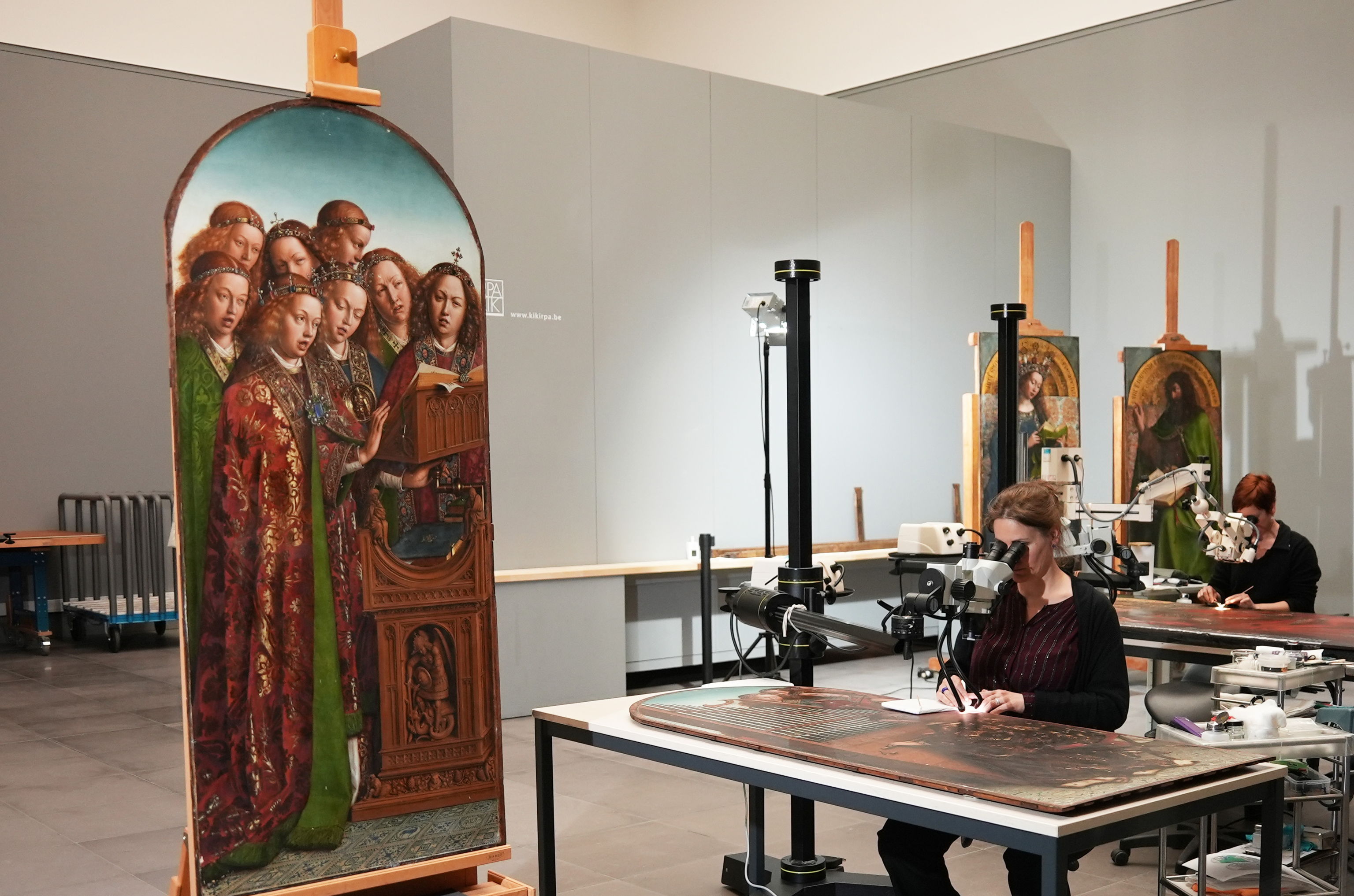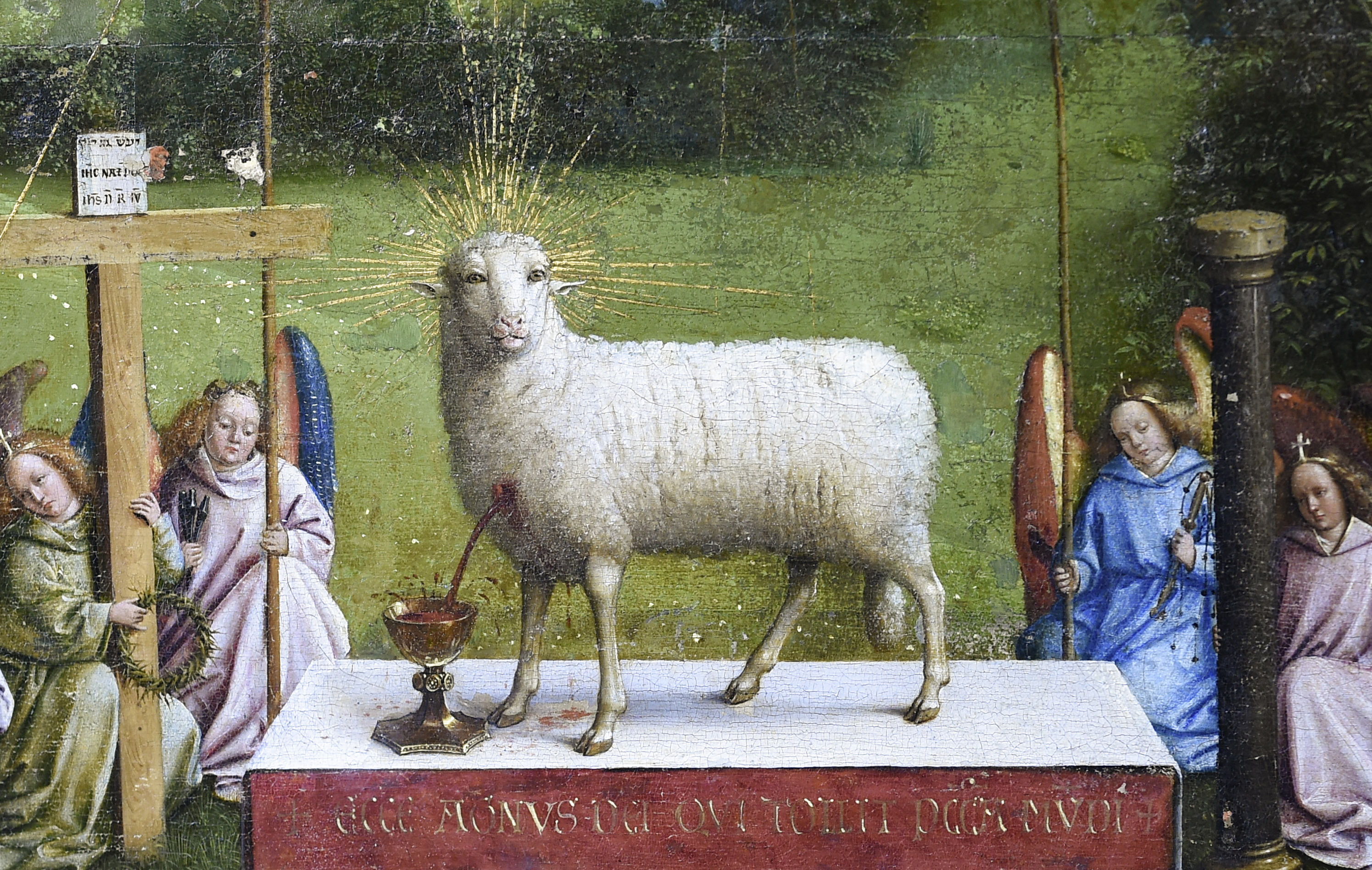Restoration of Ghent Altarpiece uncovers new surprises

The ongoing restoration of the iconic Ghent Altarpiece by the Van Eyck brothers continues to reveal hidden surprises. During the third and final phase, set to conclude in 2026, extensive 16th-century overpaintings were discovered on the upper panels of the opened altarpiece. The Royal Institute for Cultural Heritage (KIK-IRPA) announced the findings on Tuesday.
The overpaintings, found on the draperies of John the Baptist, Mary and the Godhead, are being meticulously removed. Half of the layers have already been cleared, revealing the "original vibrant colours and restoring harmony to the central figures", according to KIK-IRPA.
The Adam and Eve panels were less affected by overpainting, primarily showing varnish buildup and minor retouches. Cleaning these panels has brought the Van Eyck brothers' exceptional techniques back to light. Meanwhile, the angels' panels, adorned with intricate details and the use of gold and silver leaf, are also undergoing careful cleaning.

As with earlier phases of restoration, scientific research confirms that 16th-century overpainting covered significant parts of the original work. These layers, applied over past damage and restorations, contain pigments and materials like façon de Venise, a sodium-rich glass used to speed up paint drying, which was unavailable in the Van Eycks' time and only produced later in Antwerp.
The removal process, overseen by an international committee of Van Eyck specialists, is painstaking. By lifting darkened, non-original layers, the masterpiece’s original brilliance is re-emerging.
Previous stages of the restoration have proved controversial. In phase two of the project, the revelation of the original central lamb provoked mixed reactions from art enthusiasts, who were "shocked" by its appearance.
Restoration process on show
It was described as having a disconcertingly humanoid face with bulging eyes. Ludo Collin, the canon of St Bavo's Cathedral, where the altarpiece normally resides, said he could no longer look at the titular figure's face, saying that its "human gaze is too confrontational".
Visitors to the Museum of Fine Arts in Ghent can watch the restoration live in the museum's open studio. After completion, the panels will be re-varnished and damage to the original paint will be retouched using reversible materials.
The project, supported by Flemish and international partners, uses cutting-edge scientific techniques to return the 15th-century masterpiece to its original splendor.
#FlandersNewsService | The restoration of Ghent's Altarpiece at the MSK © BELGA PHOTO JONAS DHOLLANDER
Related news
